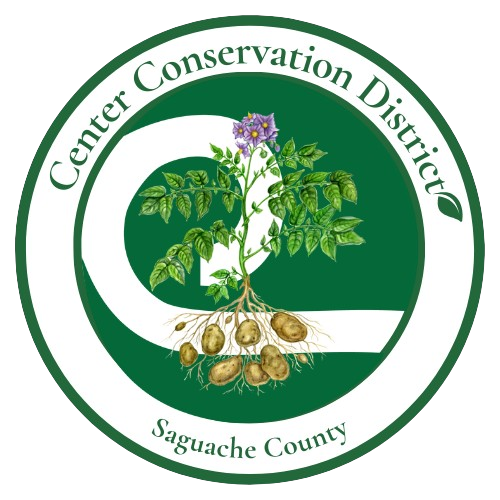Colorado Soil Health Program
Introduced to the Center Conservation District for production year 2024, the Colorado Soil Health Program (formerly known as STAR+) encourages conservation districts to provide financial and technical support to producers for the purpose of improving soil health. Participants gain expertise with new practices and an increased understanding of the environmental and economic outcomes associated with them. In 2024, 32 conservation districts are offering the Colorado Soil Health Program, including the Center Conservation District. Through this program, our District received capacity support to provide producers with technical assistance, guidance in filling out field assessment forms, assistance with conducting soil tests and installing soil moisture probes, and acting as the administrating source for participating producers by managing the program and distributing incentive payments.
To learn more about the Colorado Soil Health Program, visit the state website here.
Why Soil Health?
Improving your field or pasture's soil health provides long-term benefits such as, but not limited to:
- Reducing inputs and input costs
- Increasing yield and biomass
- Improving plant health
- Maximizing water infiltration and retention
- Reducing erosion
- Improve nutrient cycling
- Improve land resiliency
- And more
When you improve soil health, you improve your entire operation!
5 Principles of Soil Health
Soil Armor
Keeping your soil covered is your soil's strongest defense. While some may think keeping the last crop's residue on your field is lazy, we are giving you the green light to leave it where it lies! Protecting your soil with crop residue or cover is great for minimizing erosion and evaporation, maintaining soil temperature, reducing compaction, suppressing weeds, and providing habitat for your soil food web. Defense is your strongest soil health strategy!
Minimizing Soil Disturbance
When it comes to soil health, you reap what you sow. Soil disturbance takes many forms, each of which can damage your soil health: biological (overgrazing), chemical (overapplying nutrients and pesticides), and physical (tillage). Over-disturbance can cause water and wind erosion, stagnant water, crusting, and organic matter depletion. Rule of thumb: less disturbance leads to more soil health!
Plant Diversity
Monocropping year after year is exhausting your soil. For soil health, variety is the spice of life - literally! Revive your crops and soil by introducing a multi-year rotation plan to alternate warm/cool season and grass/broadleaf crops. Alternating crops is a great way to improve soil health and reduce pests. Try adding multi-species cover cropping, companion cropping, or new crop varieties to your mix - trust us, your plants and soil will thank you!
Living Root
Leave your field bare in the winter? Ensuring that your field is covered year-round by a continuous living crop will maximize your soil health benefits. Having a continuous root in the ground will add carbon and other nutrients to feed your microorganisms, increase soil porosity and water infiltration, suppress weeds, manage salinity, and more. Plus, your soil won't blow onto your neighbor's field in the spring!
Livestock Integration
Have livestock or know someone who does? Add a grazing rotation on your field or pasture for manure and other organic matter! Integrating livestock encourages soil microorganisms to break down and cycle organic matter and nutrients quicker and more effectively while providing nutritious forage for livestock. Who doesn't love a win-win situation?
